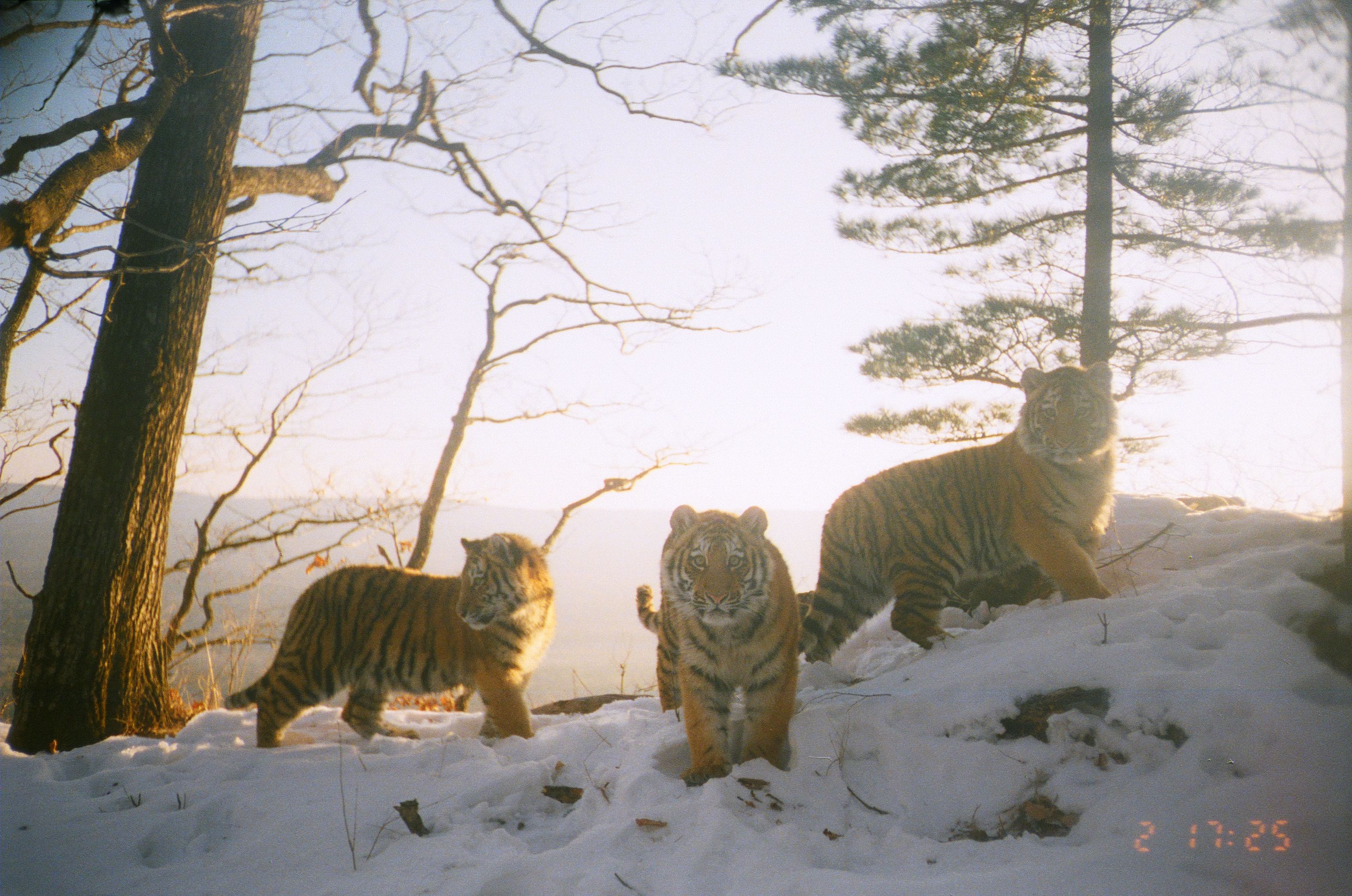Publishing their results in the journal Mammal Research, researchers with the Wildlife Conservation Society (WCS), Sikhote-Alin Biosphere Reserve, the Russian Academy of Sciences, and Panthera looked at 18 years of VHF telemetry data in and around the Sikhote-Alin Biosphere Reserve, Russia to gain insight into home range size and reproductive status of female Amur tigers.
They found that home range and core area sizes of females collapsed by 60 percent after giving birth to their cubs. Moms stayed close to the den site, presumably to protect and nurture young cubs. As the cubs matured and became more mobile, mothers took their cubs to larger and larger portions of their home range. After 18 months the mothers had generally reclaimed their original home range.
The authors say the results of the study support two hypotheses of space use by large carnivores: that adult breeding females achieve higher reproductive success by maintaining a home range just big enough to feed herself and her offspring, and a second hypothesis that females sometimes will expand home range size when space is available to allocate land to daughters. Eventually, daughters may end up sharing or completely taking over the home range of their mother.
Male offspring, on the other hand, always leave their natal home ranges, presumably driven off by other adult males (often their father), which in turn prevents inbreeding.
The study provides a better understanding of the spatial dynamics of reproducing tigresses and suggests there are significant differences in how females exploit their home range with and without cubs.
The authors note that cub-rearing is obviously critically important to population persistence, and tigresses face multiple constraints while rearing cubs. These include defending cubs from other large predators such as wolves and bears, the need to increase kill rate and/or prey size to feed their offspring; obtaining more prey from smaller areas while they stay near the den site, and potentially having to reclaim temporarily abandoned sections of their home range from encroaching females.
The study found that the time taken for females to recover home ranges while with cubs was longer than expected, but is likely not an issue in landscapes like in India where home ranges are smaller, and can easily be traversed even when cubs are young. However, when prey densities are naturally low, and home ranges large, as in Russia, this pattern and constraints may be important both for other tiger populations and other large carnivore species. In particular, the long lag period in recovering a home range may have consequences when portions of territories are not defended by solitary females.
Said Anna Klevtsova, of WCS’s Russia Program and lead author of the study: “This study gives conservationists more insight into the complicated lives of tiger mothers. The more we understand how tigresses and their cubs use their landscape, the better we can work to protect them.”
Approximately 350-400 adult Siberian or Amur tigers remain in the wild, with 95 percent of these individuals inhabiting the forests of the Russian Far East, where they play a critical role in both the ecosystem and local culture. The tiger is a keystone species that requires large, intact forest ecosystems and acts as an indicator of overall ecosystem health.
Although poaching levels reached an estimated 60-70 tigers per year in the early 1990s, today conservation efforts have succeeded in stabilizing the number of Amur tigers in the wild. However, there are still significant threats to this population, and the Amur tiger remains endangered.
###
WCS (Wildlife Conservation Society)
MISSION: WCS saves wildlife and wild places worldwide through science, conservation action, education, and inspiring people to value nature. To achieve our mission, WCS, based at the Bronx Zoo, harnesses the power of its Global Conservation Program in nearly 60 nations and in all the world’s oceans and its five wildlife parks in New York City, visited by 4 million people annually. WCS combines its expertise in the field, zoos, and aquarium to achieve its conservation mission. Visit: newsroom.wcs.org Follow: @WCSNewsroom. For more information: 347-840-1242.


